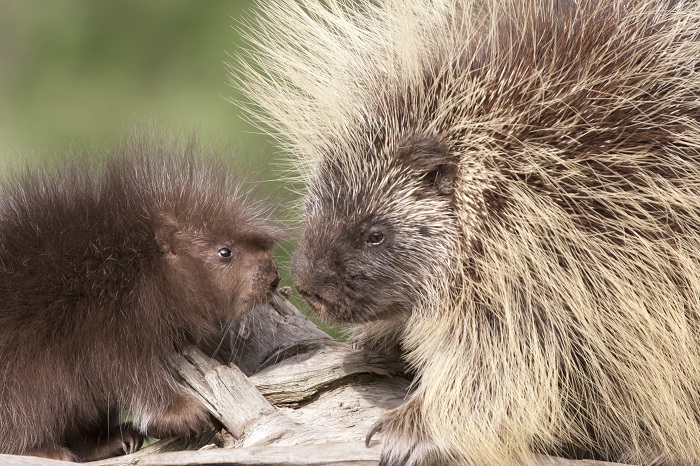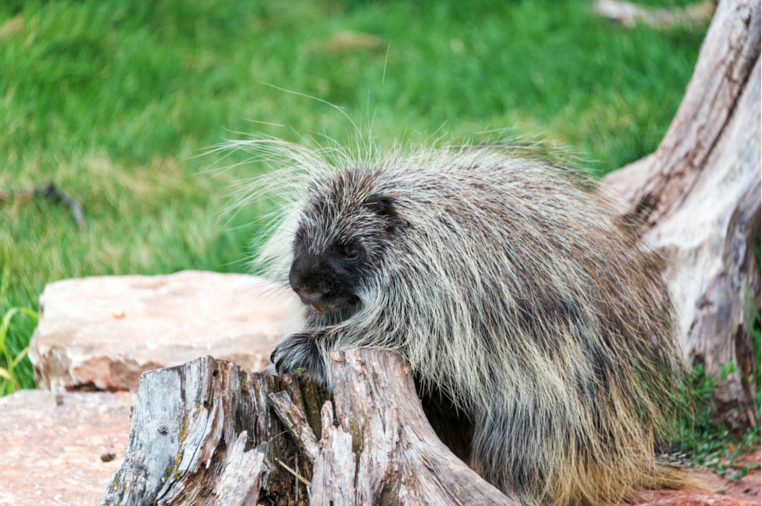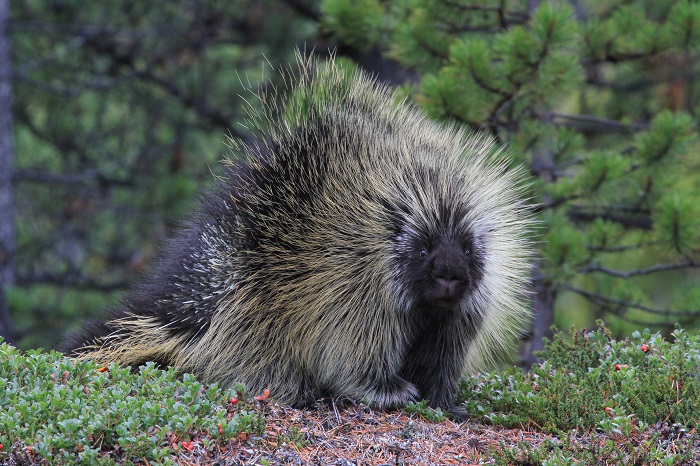Porcupine Love; a Spiny Affair
Reproduction for porcupines – the subject of many speculative jokes- is a chancy affair. The female is fertile only once a year in the autumn and then only for a window of several hours. The male, being a solitary creature, must seek out a female at precisely the right moment, guarding her against all others until she accepts his advances. The courtship ritual includes the male spraying copious amounts of urine on his partner, followed by a delicate dance in avoidance of each other’s quills. If a successful mating occurs, the female will carry the fetus a record 270 days, bearing a single newborn and suckling it an equally lengthy 120 days! Within hours of birth, the pup’s quills have hardened enough to provide ample protection lasting a lifetime.

One is rarely offered a glimpse of the elusive porcupine. I’ve been lucky enough to see them on several occasions; snoozing in a fir tree in Alaska and munching horsetails in Colorado. During daylight, camouflaged high in the forest canopy, they perch precariously upon branches, crouched into spiny balls. A nocturnal creature, the porcupine’s world comes alive with the setting sun, when it descends to forage on succulent herbs and berries. Like the beaver, porcupines are active foresters. Their pruning activities allow more light through the canopy, which nourishes the understory plants they depend upon for summer forage.

Porcupines are rodents, yet their closest relatives are South American porcupines, guinea pigs, and chinchillas. Some three million years ago, as the continents of North and South America collided, porcupine forebears ambled north, along with the equally odd opossums and armadillos.
The porcupine knows few predators. If confronted, it confidently turns its back to the aggressor, displays its ample set of quills, slaps its tail back and forth and makes a cat-like hissing sound. Satisfied to have made a strong impression, it will lumber confidently away into the forest. Contrary to the popular myth, porcupines cannot throw their quills – yet the slightest touch will cause them to lodge in their victim’s skin, much to the chagrin of many a domestic dog.

One might wonder if porcupines risk impalement on their own coats of armor, and indeed they do. Yet, each quill is coated with a natural antibiotic to prevent infections should this occur. Quills also provide buoyancy for the animal as it fords waterways to travel and feed on aquatic plants. Some predators have overcome the creature’s formidable defenses, including mountain lions, bobcats. wolverines and fishers.

So if you come across one of these fascinating creatures in the forest, observe its unique behavior and beauty, but from a distance.
